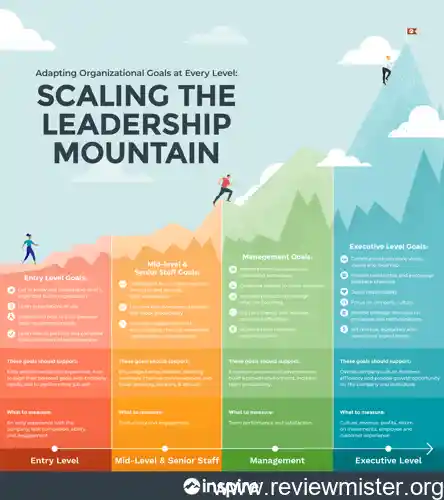When you think about games with the biggest maps, it’s not just about sheer scale—it’s about the feeling of limitless possibility and true immersion. I’ve spent countless hours investigating which titles genuinely offer the largest open worlds, and how their vastness shapes the player experience. From procedurally generated universes with billions of explorable planets to meticulously crafted landscapes spanning hundreds of thousands of square kilometers, the scale of these maps is measured not just in numbers but in how they impact your sense of adventure and engagement. In this article, you and I will dig into definitive data on open world sizes, unpack how map measurements work, and analyze what really sets these sprawling digital landscapes apart. Whether you’re a gamer looking for your next epic journey or a game designer curious about industry benchmarks, understanding what makes a game’s map truly massive—and how it’s achieved—will give us a new appreciation for the technical and creative feats behind these virtual worlds.
What Is the Game With the Biggest Map?
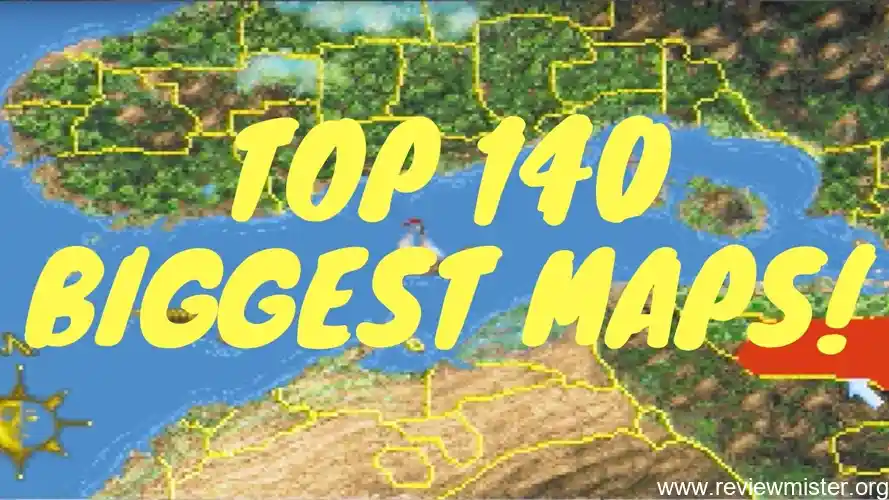
When you start searching for the game with the biggest map, you might be surprised at just how massive some virtual worlds have become. If you’re anything like me, you’ve probably wandered for hours, thinking, “Can this map really go on forever?” Some games push boundaries with maps that seem almost endless, letting you get lost for days without seeing the same place twice. There are even records and studies comparing these vast spaces, breaking them down by square kilometers and explorable area. It’s wild to realize just how much digital ground you can cover when developers really let their imaginations—and your adventures—run free.
Game map size comparison by square kilometers
If you’ve ever wondered which game truly holds the crown for the game with biggest map, you’re not alone—I’ve asked myself the same thing more than once. The answer gets wild when you realize that some games go way beyond what you’d expect. No Man’s Sky technically wins by a landslide, with its universe containing 18 quintillion planets—so big, you and I couldn’t see it all in a million lifetimes. If we’re talking about more tangible worlds, Minecraft’s map clocks in at around 4 billion square kilometers. It’s mind-blowing how these virtual worlds make our real planet look tiny in comparison!
Largest open world games by explorable area
If you’ve ever wondered which game truly holds the crown for the game with biggest map, you’re not alone—I’ve asked myself the same thing more than once while getting lost in digital worlds. The answer depends a bit on how you measure it, but if we’re talking about sheer explorable size, No Man’s Sky blows everything else out of the water with its mind-boggling universe of 256*10^22 planets. Minecraft isn’t far behind, offering a sandbox that spans roughly 4 billion square kilometers. For those of us who love classic RPGs, Daggerfall’s 161,600 km² map is legendary. Each of these games sets a new bar for just how vast a game world can be.
Research-based rankings from game studies
If you’ve ever wondered which game claims the title of “game with biggest map,” you’re not alone—I’ve spent hours digging into the numbers myself. No Man’s Sky usually tops the list, boasting a procedurally generated universe so vast it feels infinite, with more than 18 quintillion planets. Minecraft comes close, offering a sandbox world that stretches over 4 billion square kilometers, so your adventures can literally go on forever. But if you’re looking for something more traditional, The Elder Scrolls II: Daggerfall offers a hand-crafted map at a staggering 161,600 km². So, depending on how you define “biggest,” you’ve got some jaw-dropping contenders to explore!
How Are Game Map Sizes Measured?
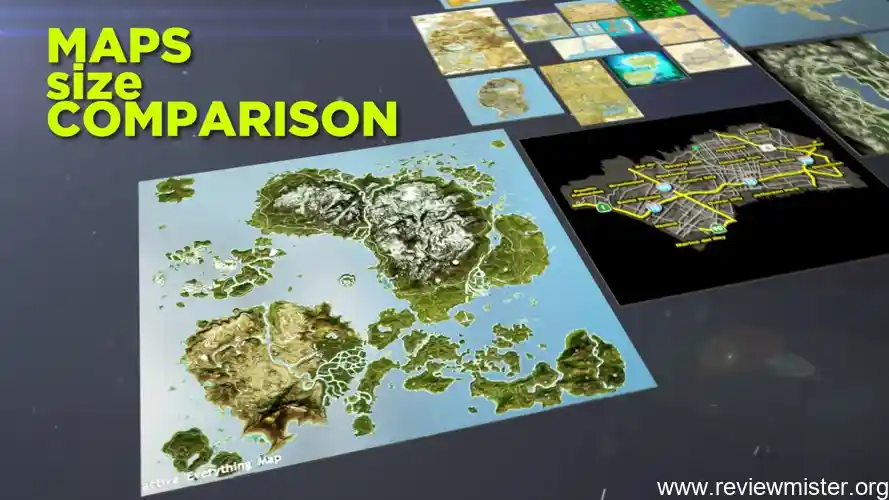
When you and I talk about the game with the biggest map, it’s easy to get lost in the numbers—but have you ever wondered how those numbers are actually measured? It’s not as simple as pulling out a ruler! Developers and researchers use different methods, from counting the total square kilometers you can roam to checking how much of that space is actually playable. Sometimes, they even debate whether to include endless procedurally generated worlds or stick to hand-crafted boundaries. The way we measure these maps shapes our whole understanding of what “biggest” really means in the world of gaming.
Standard units for game map dimensions
When you and I talk about the game with the biggest map, how do we actually figure out just how massive that world is? Map sizes are usually measured in square kilometers or miles, just like in real life, but there’s a twist—some games use procedural generation, which means their worlds can be nearly infinite (think No Man’s Sky), while others have fixed, hand-crafted boundaries. Developers and researchers typically calculate the explorable area, sometimes separating truly playable zones from empty or inaccessible space. So, when comparing maps, it’s all about how much ground you can actually cover, not just what looks big on paper.
Procedural generation versus hand-crafted worlds
When you and I talk about the game with biggest map, it’s easy to get lost in numbers—but how do developers actually measure these huge worlds? Usually, they use square kilometers or miles, just like we would with real geography. For hand-crafted games, it’s often a direct calculation based on the in-game coordinates. But with procedurally generated universes like No Man’s Sky or Minecraft, it gets trickier; developers estimate the playable area by calculating the maximum possible boundaries. These measurements help us compare one massive world to another, even when the scale is almost impossible to imagine!
Sources: University game design research on spatial measurement
If you’ve ever wondered how developers figure out which game has the biggest map, it all comes down to measuring in square kilometers or miles—just like mapping real-world countries. Some games make it easy by offering clear dimensions, but others, especially those with procedurally generated worlds like Minecraft or No Man’s Sky, require a bit of math and some creative estimation. You and I might think the bigger the number, the more epic the adventure, but there’s more to it than just size—developers factor in explorable space, boundaries, and even how much of the terrain you can actually interact with when determining a game’s true map scale.
Which Games Feature the Largest Maps?
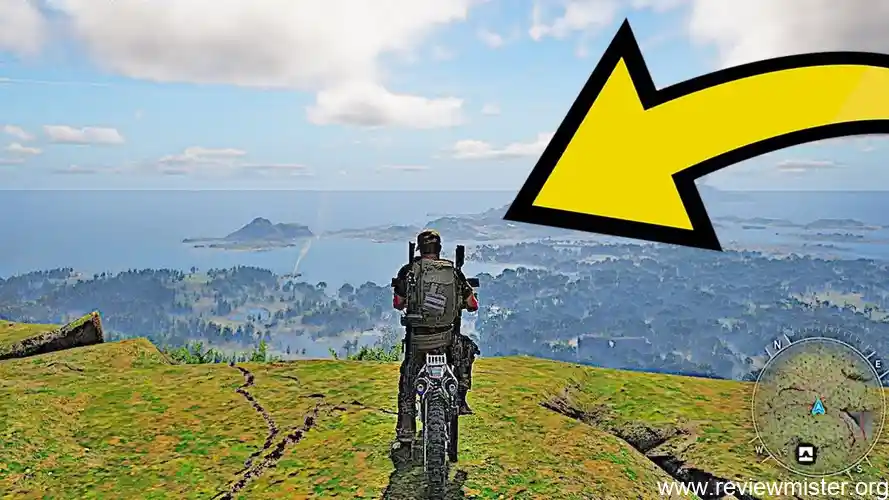
If you’re curious about the game with the biggest map, you’ll probably be amazed at how gigantic some game worlds really are. I’ve found that titles like No Man’s Sky, Minecraft, and Daggerfall push the boundaries, each offering a different take on what “massive” means in gaming. Whether it’s a universe with almost infinite planets to explore, a sandbox that seems to stretch forever, or a hand-crafted fantasy realm that takes days to cross, these games set the bar for sheer scale. If you love getting lost in virtual worlds, you and I both know these maps can feel endless.
List of top 5 games by map size including No Man’s Sky, Minecraft, Daggerfall
If you’re searching for the game with the biggest map, you’ll find some jaw-dropping contenders. No Man’s Sky takes things to a mind-boggling scale, letting you roam a universe packed with over 18 quintillion planets—yes, that’s a number with 19 zeros! Minecraft isn’t far behind, offering a sandbox world that stretches for billions of square kilometers, so big you could walk forever and still find new places. For those who love classic RPGs, Daggerfall’s map covers a massive 161,600 square kilometers—bigger than real-world countries! These titles don’t just give you space—they redefine what “open world” can mean for us as players.
Measured map sizes: No Man’s Sky (256*10^22 planets), Minecraft (4 billion km²), Daggerfall (161,600 km²)
If you’ve ever wondered what the true “game with biggest map” is, you’re not alone—I’ve gone down that rabbit hole, too! Some titles really go all-out when it comes to sheer size. For example, No Man’s Sky blows everything else away with its procedurally generated universe of trillions of planets, so big you could never see it all in one lifetime. Minecraft’s world is technically finite, but at over 4 billion square kilometers, it might as well be endless for you and me. Then there’s Daggerfall, whose classic open world spans a staggering 161,600 km². Each of these games redefines “massive” in its own way, letting you get lost for days, weeks, or even years.
Comparison of explorable versus playable map area
If you’re searching for the game with the biggest map, you’ll notice some titles really stand out for sheer scale. No Man’s Sky blows everything out of the water with its nearly infinite universe, featuring a staggering 256 sextillion planets to explore—good luck seeing them all! Then there’s Minecraft, where your adventures can stretch across about 4 billion square kilometers, letting your creativity run wild. Daggerfall from The Elder Scrolls series gives you a massive fantasy world at 161,600 km², and games like The Crew and The Witcher 3 also impress with their vast, detailed landscapes. Each game offers you a different kind of freedom—so which world would you want to get lost in?
What Factors Affect Map Size in Games?
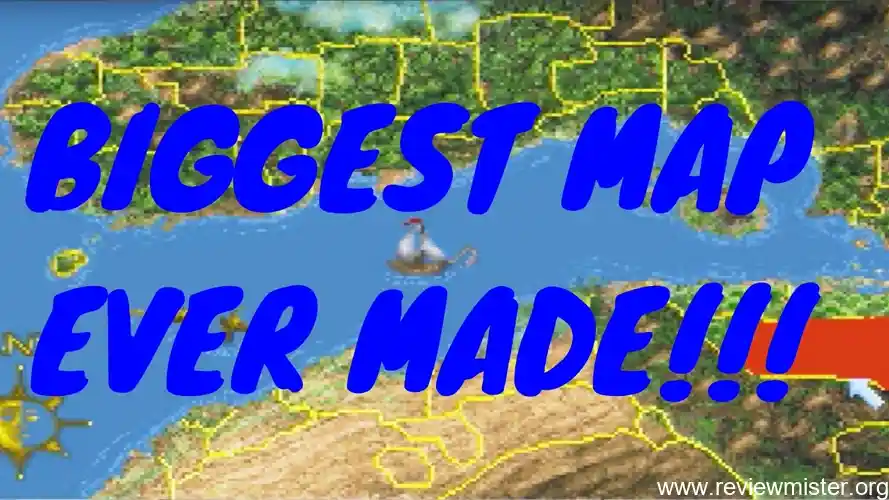
When we talk about the game with the biggest map, you and I both know there’s a lot more going on behind the scenes than just drawing a giant world. It’s not as simple as stretching the digital landscape as far as possible—developers have to think about things like how much data your console or PC can actually handle, what their game engine can realistically manage, and how players like us will even find our way around. Sometimes, it feels like they’re trying to fit an entire universe into your living room! All these factors work together to shape just how massive (or manageable) a game world can really be.
Game engine limitations and scalability
When you and I look at what makes the game with biggest map possible, it’s clear that a ton of factors come into play. Developers have to juggle the power of the game engine, hardware limitations, and even how much detail they can reasonably add before your console or PC starts crying for help. Sometimes, going bigger means sacrificing things like intricate environments or dense quest content, just to keep things running smoothly. It’s a balancing act—kind of like trying to fit an entire city into a shoebox without squishing anything important. The sweet spot? Making sure the massive map still feels alive and fun for us to explore.
Technical constraints: hardware and software
When you and I look at what makes a game with the biggest map possible, it’s not just about drawing a giant square on a virtual grid. Developers have to juggle a ton of factors—game engines can only handle so much data before your hardware starts to chug, and bigger maps usually mean more complex asset streaming and memory management behind the scenes. There’s also a balance between how much of the world is actually filled with meaningful stuff to do versus just empty space. If you’ve ever felt lost or bored in a huge game world, it’s likely because the map size outpaced what the tech—or the designers—could fill with real adventure.
University research on player navigation in large virtual environments
When you’re thinking about what makes a game with the biggest map possible, it’s not just about stretching the world as far as the eye can see. Game engines have their own limits—some can’t handle endless terrain, while others get bogged down if you add too much detail. Hardware plays a huge role too; if your console or PC can’t keep up, you’ll end up with slow loading times and glitches. Developers also balance map size with the amount of content, because nobody wants a massive world that feels empty. So, every epic map you see is a careful dance between ambition and practical constraints.
How Does Map Size Impact Gameplay?
When you dive into a game with the biggest map, you’ll quickly notice just how much it changes the way you play. Suddenly, every journey feels like an adventure, and getting from point A to point B becomes an experience in itself. If you’re anything like me, you’ll find yourself getting lost in side quests or just wandering around, soaking up the world’s atmosphere. But there’s a flip side—sometimes all that space can feel overwhelming or make the action seem spread thin. The balance between exploration and engagement really shapes how much you enjoy and stick with a massive game world.
Player engagement and exploration metrics
When you dive into a game with the biggest map, the sheer scale can totally shift how you play. Massive worlds mean you get more freedom to explore, but they also change the pace—sometimes, you’ll spend ages just traveling from point A to B. That can be amazing if you love getting lost and discovering hidden corners, but it can also feel empty if there’s not enough to do along the way. Fast travel systems and smart quest design become your best friends, helping you avoid tedious backtracking and making sure the adventure stays exciting instead of overwhelming.
Fast travel, quest design, and world density
When you play a game with the biggest map, you’ll notice how the sheer size can completely change the way you experience the world. Massive maps let you roam, stumble on secrets, and get lost in side quests, but they also raise questions—will you get bored crossing empty terrain, or does the endless space spark your curiosity? For some, a huge map is freedom; for others, it can feel overwhelming if there’s not enough to actually do. The balance between vastness and meaningful content is what really shapes how much fun you’ll have exploring, questing, and making memories in these gigantic digital worlds.
Studies on player retention in large open worlds
When you dive into a game with the biggest map, you’ll quickly notice how the sheer scale changes the way you play. Huge maps can draw you in, making every journey feel like a real adventure, but they can also leave you wandering for ages without bumping into anything interesting if the world isn’t packed with enough to do. Sometimes, it’s a thrill to have so much freedom, but other times, you might crave a shortcut like fast travel just to avoid long treks. The map’s size shapes how you explore, how quests are designed, and even how long you stick around in the game.
How Do Developers Create Massive Game Maps?
When you think about what goes into making a game with the biggest map, it’s honestly mind-blowing. Developers have to balance art, math, and technology, all while keeping you, the player, in mind. Sometimes they lean on procedural generation—kind of like setting up a digital recipe that bakes new worlds on the fly, like in No Man’s Sky or Minecraft. Other times, they painstakingly craft every valley and city by hand, as seen in games like Daggerfall. No matter which path they take, the real challenge is making sure these gigantic spaces actually feel alive and fun, not just endless stretches of empty land.
Procedural generation algorithms in No Man’s Sky and Minecraft
If you’ve ever wondered how developers manage to build a game with the biggest map, it’s a mix of clever tech and creative thinking. Some studios use procedural generation—basically, smart algorithms that build worlds almost endlessly, like what you see in No Man’s Sky or Minecraft. Others, like Daggerfall or The Witcher 3, rely more on handcrafting, where every mountain and town is placed with purpose. You and I might take these vast spaces for granted, but behind the scenes, devs juggle challenges like rendering huge areas smoothly and streaming assets so you’re never stuck waiting. It’s a real balancing act between ambition and hardware limits.
Handcrafted design in Daggerfall and The Witcher 3
When you think about a game with the biggest map, have you ever wondered how developers actually pull it off? It’s a wild mix of creative vision and technical wizardry. Some teams use procedural generation—like in No Man’s Sky or Minecraft—where clever algorithms whip up endless worlds from simple rules. Others, such as Daggerfall or The Witcher 3, rely on handcrafting every corner, which takes loads of time and teamwork. Both methods push hardware to the limit, juggling memory, asset streaming, and seamless loading so you and I can roam these giant landscapes without frustrating delays. It’s a real balancing act!
Technical challenges in rendering and asset streaming
When you wonder how developers pull off a game with the biggest map, it’s all about mixing smart tech with creative grit. You and I might think it’s just about making things bigger, but it’s way more complex. For games like No Man’s Sky and Minecraft, procedural generation is the secret sauce—algorithms build worlds so huge you could never see it all. Meanwhile, titles like Daggerfall and The Witcher 3 lean on handcrafting, placing every tree and quest with care. It’s a balancing act between making the world feel endless and making sure there’s always something worth discovering wherever you go.
What Are the Limitations of Large Game Maps?
When you’re looking at a game with the biggest map, it’s easy to get swept up by all that virtual real estate, but bigger isn’t always better. I’ve found that massive maps can sometimes feel empty, with long stretches where there’s not much to do or see. Have you ever spent ages just running or driving from one quest to another, only to realize most of the space is filler? Besides that, huge maps can put a real strain on your hardware, causing annoying lag or long loading times. It’s like owning a mansion but only living in a couple of rooms—impressive, sure, but not always practical.
Empty space versus interactive content ratio
When you and I chase after the game with biggest map, it’s easy to get hyped about endless horizons—but there’s a catch. Massive maps can feel empty if there’s more space than stuff to actually do, turning exploration into a long, lonely walk. Plus, the bigger the world, the more likely you’ll run into slow loading screens or even bugs that break your immersion. Sometimes, it’s tough to remember where you are or what you’re supposed to do because everything looks similar. So while size can be impressive, it’s the balance between scale and meaningful content that really matters for us as players.
Performance issues and loading times
When you think about the game with the biggest map, it’s easy to get excited about endless horizons and boundless adventure. But let’s be real—massive maps come with their own headaches. Sometimes, you spend more time running across empty terrain than actually playing, making the world feel hollow instead of epic. Performance can take a hit, too, with longer load times or frame drops if your hardware isn’t up to scratch. And let’s not forget, a huge map isn’t always better if it means less meaningful content packed into all that space. It’s a balancing act between size and substance.
Player feedback on map usability
When it comes to playing a game with the biggest map, you and I both know that sheer size isn’t always a win. Massive worlds often mean a lot of empty, repetitive space—think about wandering for ages just to find something interesting. Sometimes, these gigantic maps can bog down our PCs or consoles, leading to frustrating load times or performance hiccups. Plus, if a map is too sprawling, it’s easy to feel lost or overwhelmed, making it tough to stay engaged or even remember where you’ve been. So, while a huge map can be impressive, it brings its own set of headaches we can’t ignore.
What Are Emerging Trends in Map Size?
If you’re like me and always chasing the next game with the biggest map, you’ll notice some wild new trends shaking things up. Developers are now tapping into cloud computing to make worlds that feel almost limitless, stretching beyond what our consoles or PCs could do solo. You and I might soon wander massive landscapes in VR, where everything feels even more real and immersive. Plus, there’s some fascinating university research going on about how our brains handle navigating these gigantic spaces—so don’t be surprised if future games feel even more intuitive and mind-blowing when it comes to exploring epic maps.
Cloud computing and future map scaling
If you’re curious about where the future of the game with biggest map is headed, you’ll want to keep an eye on a few exciting trends. Developers are now tapping into cloud computing to break past old hardware limits, meaning we could soon see worlds that stretch even further than we ever imagined. Virtual reality is also pushing boundaries, letting us step right into these massive spaces for a truly immersive feel. Plus, ongoing university research into how we navigate and remember virtual environments is helping shape smarter, more player-friendly designs for tomorrow’s sprawling game maps.
VR and immersive large-scale environments
If you’re fascinated by the race for the game with the biggest map, you’ll notice some exciting trends on the horizon. Developers are now tapping into cloud computing, letting us explore worlds that can grow almost endlessly without choking our hardware. Virtual reality is also picking up pace, promising massive, immersive spaces where you can truly get lost. Plus, researchers are looking at how our brains handle these gigantic digital landscapes, which could lead to maps that feel vast but never overwhelming. Basically, the future of huge game maps is about smarter tech and more meaningful adventures for you and me.
University research on cognitive mapping in virtual worlds
If you’re curious about where the next game with the biggest map might come from, you’ll want to keep an eye on new tech like cloud computing and VR. Developers are starting to use cloud servers to handle gigantic, seamless worlds that wouldn’t be possible on your home console alone. With the rise of VR, these maps aren’t just getting bigger—they’re feeling more real and immersive than ever, letting you lose yourself in vast spaces. Research is even looking at how your brain navigates such huge digital worlds, so future maps can be both massive and easier for you to explore.
Q1. What is the game with the biggest map in terms of explorable area?
Ans: No Man’s Sky is considered to have the biggest map, featuring a procedurally generated universe with over 18 quintillion planets to explore.
Q2. Which open-world game has the largest hand-crafted map?
Ans: The Crew 2 features one of the largest hand-crafted maps, roughly replicating the entire contiguous United States.
Q3. Are there any fantasy games known for having huge maps?
Ans: The Elder Scrolls II: Daggerfall has one of the largest fantasy game maps, spanning over 62,000 square miles.
Q4. Why do players seek out games with the biggest maps?
Ans: Players enjoy vast maps for exploration, immersion, and the freedom to roam endlessly.
Q5. Does a bigger map always mean a better gameplay experience?
Ans: Not always; the quality of content and engagement within the map is just as important as its size.


